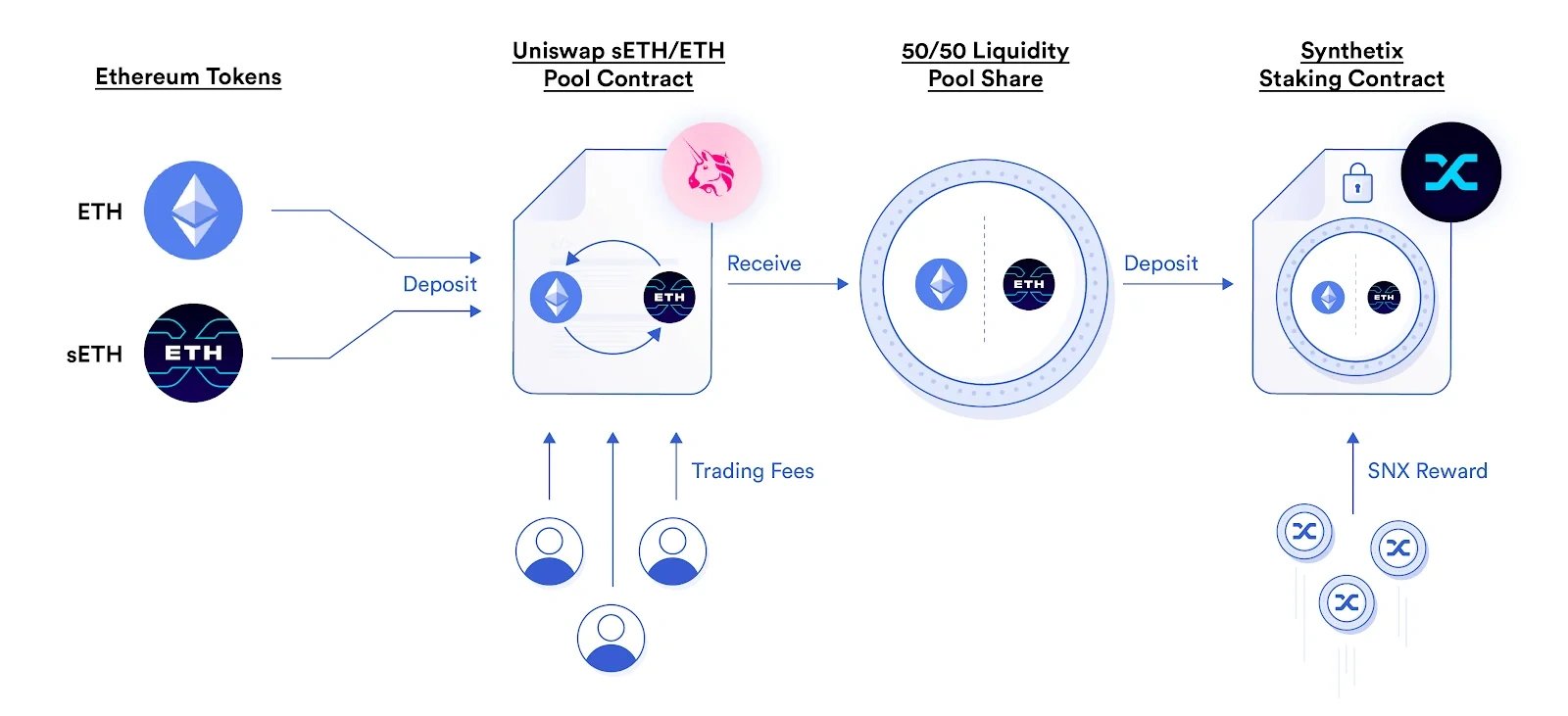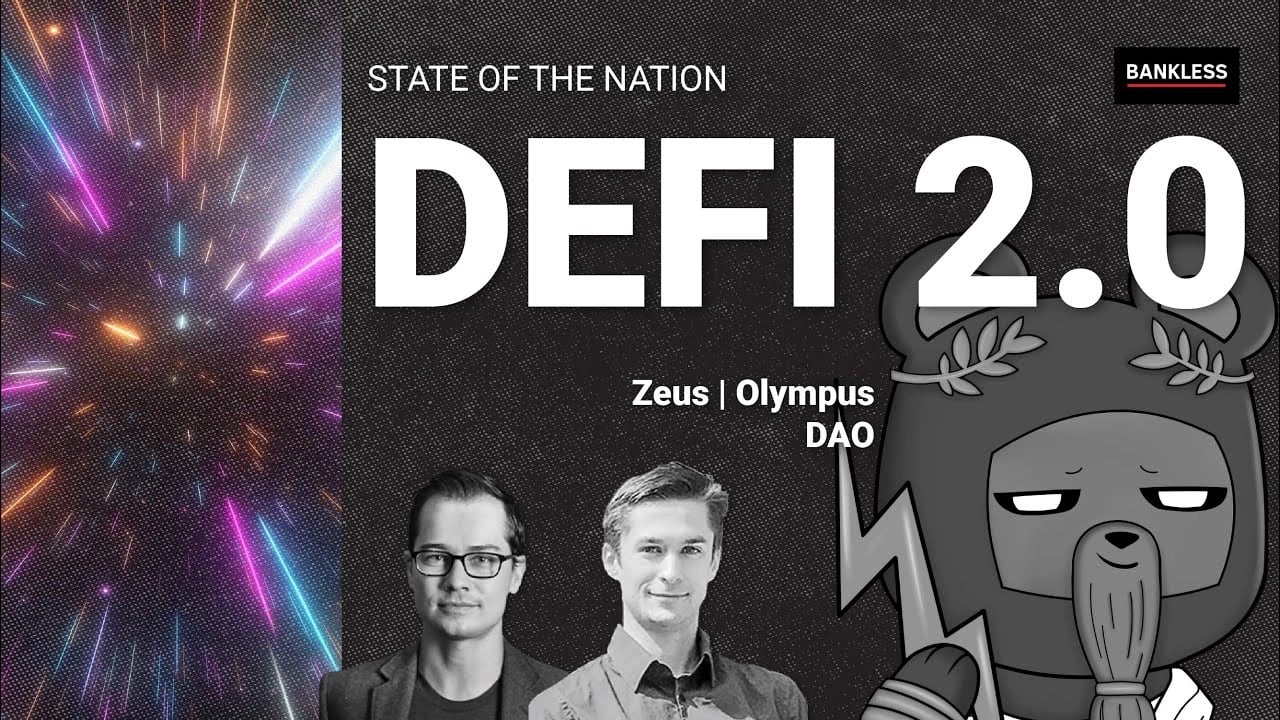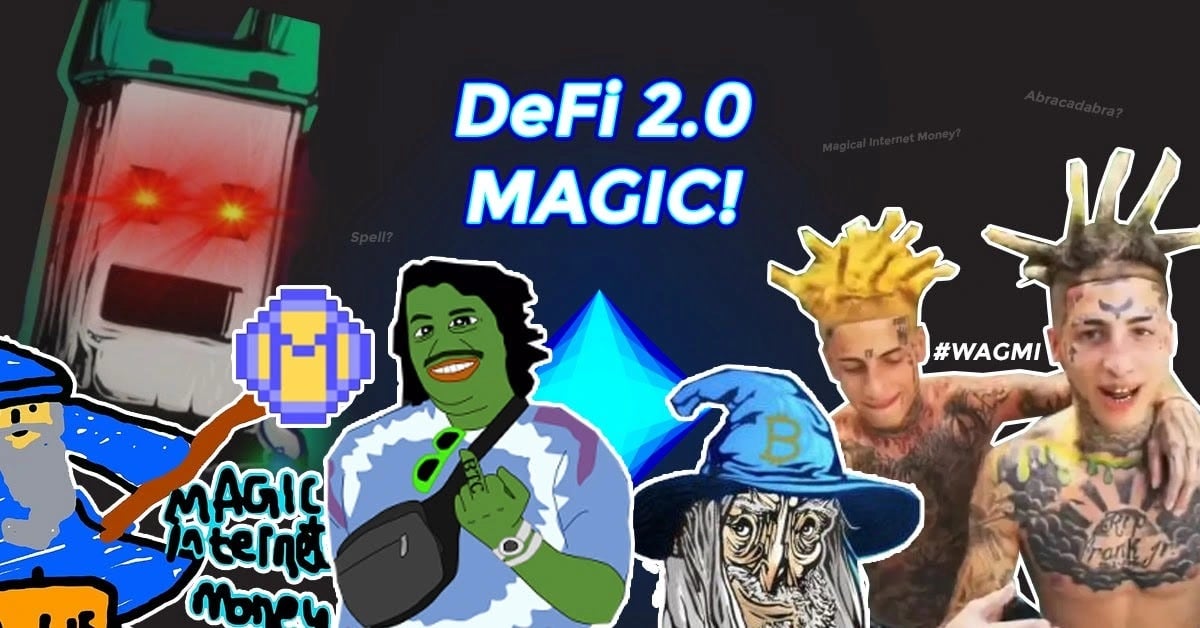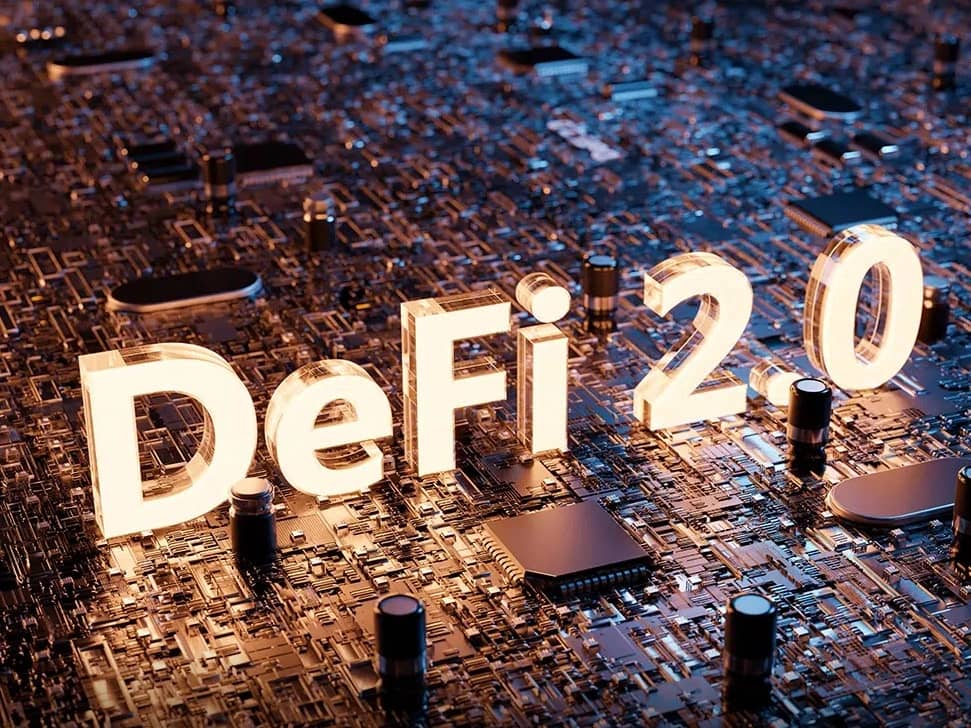DeFi 2.0
DeFi 2.0 是区块链世界中的一个新词,指的是建立在先前 DeFi 突破(如收益耕作、借贷和其他事物)之上的 DeFi 协议的子集。许多具有原生代币的链上系统都面临流动性限制,这是值得注意的 DeFi 2.0 实现的一个关键重点。[2]
概述
去中心化金融,通常被称为 DeFi,一直是区块链领域最具影响力和最成功的创新浪潮之一。在具有内置智能合约功能的区块链和像 Chainlink 这样的安全预言机网络的驱动下,DeFi 指的是广泛的去中心化应用程序,这些应用程序消除了现有传统金融服务的中介,并解锁了全新的金融原语。[2]
由于其固有的无需许可的可组合性和开源开发文化的优势,DeFi 协议不断进步和迭代基于金融的协议的成熟模型。DeFi 生态系统以闪电般的速度发展——在过去的几个月中,流动性导向的 DeFi 项目的崛起带来了一股新的 DeFi 创新浪潮,通常被称为 DeFi 2.0。[1]
早期的 DeFi 先驱者,如 Uniswap、Aave、Bancor、MakerDAO、Compound 为蓬勃发展的 DeFi 经济奠定了坚实的基础,允许链上存款收益和无需许可地访问运营资本,并为生态系统添加了许多关键且可组合的“货币乐高”。
目前阻止该行业实现可持续发展的根本问题是该行业对第三方提供商和代币激励措施的依赖,以及 DeFi 与传统金融和全球经济之间基本上不存在的关联。DeFi 2.0 及以后的全部目的就是为了解决这些问题。
DeFi 2.0 运动的一些先驱者专注于开发长期流动性的方法。
构建协议控制的价值机制是 DeFi 2.0 预计帮助 去中心化自治组织 (DAO) 的另一种方式。
稳定币是与一篮子资产(如美元、欧元,甚至黄金和其他加密货币)挂钩的 加密货币,通常用于 DeFi 操作。然而,更常见的是使用由美元支持的稳定币。嗯,另一方面,DeFi 2.0 “反对它”,因为它不想让我们与通货膨胀的中心化系统和监管风险联系在一起。一些平台正在通过发行自己的浮动储备货币进行创新——同样,Olympus 就是一个例子。[6]
DeFi 1.0 的局限性
可扩展性
高昂的费用和漫长的交易批准等待时间持续给用户体验带来压力。众所周知,大多数DeFi解决方案都建立在以太坊区块链上,由于网络上的用户数量巨大,导致了相当大的延迟,并且交易成本也在飞涨。因此,对于资金少于几千美元的用户来说,使用 DeFi 设备变得无利可图。 因此,问题出现了:用户如何在不处理以太坊的扩展问题的情况下体验 DeFi?
资金流向了 BSC、Polygon 和 Solana,它们是一些可以提供用户最需要的服务的区块链。解决可扩展性问题的方案可能会引发下一波市场浪潮。[2]
有限的消费者保护
DeFi以去中心化的方式在点对点网络上运行。因此,与中心化监管的金融系统相比,DeFi用户的规则和条例较少。虽然这种缺乏严格监管在某种程度上帮助了DeFi的蓬勃发展,但这种运作模式也带来了严峻的挑战。例如,如果交易出现问题,消费者可能获得的补救措施有限。另一方面,在中心化金融系统中,用户和机构都有足够的缓冲。例如,在美国,联邦存款保险公司(FDIC)在银行倒闭时,每个机构最多可向存款账户所有者偿还25万美元。银行还必须拥有最低限度的资本作为储备,以维持持续的稳定。DeFi不提供此类保护。[4]
不改变代币价格的DEX和AMM

所有加密货币都需要流动性。虽然激励计划可以提供暂时的缓解,但它们远非理想,并且对小投资者构成更大的潜在风险。
解决流动性问题,或吸引更多用户和资本进入DeFi市场的最简单方法是帮助他们赚取收益。AMM协议上的第三方流动性提供商为流动性问题提供了一个部分解决方案,允许任何有足够资金的独立人士为代币对提供流动性。
在2020年夏天,当收益耕作(也称为流动性挖矿)可用时,DeFi活动激增,被区块链专家称为“DeFi夏季”。收益耕作的概念很简单。用户通过AMM协议为交易对提供流动性,收到LP代币作为交换,然后质押LP代币以获得项目原生代币的回报。
这种方法通过为第三方流动性提供商提供强大的经济理由来解决先有鸡还是先有蛋的难题,以提供代币的更高回报。由于更深的流动性,他们可以通过质押获得更多的项目原生代币,从而获得更高的收益,此外还可以在AMM交换中产生更高的累计费用。
由于收益耕作的出现,新的DeFi协议能够启动大量的流动性来启动和维持运营,并最大限度地减少用户进入其生态系统的滑点。因此,DeFi协议的数量呈指数级增长,表明收益耕作如何降低了用户和DeFi项目创建者的进入成本。
收益耕作已被证明是启动DeFi项目资金的有效手段,但从长远来看并非没有风险。此外,由于长期收益耕作项目的具体限制,它本身并不能完全解决流动性问题,尽管它很有效。
大多数DeFi项目必须开展收益耕作计划并启动流动性,因为这是必要且健康的。但项目团队必须谨慎对待其代币供应和长期收益耕作策略,以避免产生负面的长期后果。[2]
中心化
除了人们来到DeFi赚钱之外,他们也来DeFi追求独立和自给自足。尽管如此,仍然有一群人控制着大量的DeFi协议,导致DeFi用户失去了信心。
为了解决这个问题,DeFi项目倾向于优先考虑去中心化方面。DAO允许任何人对项目的发展进行投票,近年来DAO的受欢迎程度激增。[2]
资产使用效率低下
人们,尤其是在加密货币领域,注意力持续时间很短,并且人们正在远离DApps以追求更大的财务前景。收益率不像以前那样有吸引力,特别是对于DeFi的蓝筹项目。这导致了反复出现的挖矿和抛售情况,导致实践中不健康的现金流和许多其他问题。
DeFi 2.0将能够通过专注于资本效率的项目来做到以下几点:
- 优化TVL:允许充分利用存入资产的潜力。
- 创建可持续的现金流:正如Olympus DAO所展示的那样,用于交换LP代币以换取债券的系统减少了挖矿和抛售情况的频率,同时也提供了长期流动性。因此,保持良好的现金流可以使项目更可持续地扩展并吸引更多的支持者。[2]
抵押品
抵押品是用于获得贷款的有价值物品。例如,房屋贷款的抵押品可能是您希望购买的房屋。几乎所有DeFi借贷交易都需要等于贷款价值100%的抵押品。这一限制不仅限制了谁可以申请DeFi贷款,也限制了谁愿意接受DeFi贷款。[4]
用户体验
DeFi平台的用户体验也是一个主要问题。由于其复杂的用户体验和用户界面,去中心化产品难以使用。这就是为什么大多数DeFi活跃用户都是经验丰富的加密货币爱好者。Defi 2.0项目旨在通过使DeFi平台更有趣、互动性和用户友好性来消除这个问题。[4]
DeFi 1.0 vs DeFi 2.0
货币交易需要创建一个 DeFi 2.0 去中心化金融系统,该系统既可持续又自动分配。DeFi 2.0 阶段的去中心化金融更有可能连接所有提供流动性的社区成员。流动性激励正在推动连接所有未来交易中的关系,以构建一个温暖、可持续和互联的去中心化金融架构。
它致力于打破 DeFi 1.0 的冷交易模式,期望用户在形成强大的纵向联系的同时,发展紧密的横向联系,因为它提倡紧密的用户关系。
| DeFi 1.0 | DeFi 2.0 | |
|---|---|---|
| 用户之间的连接 | 用户之间没有连接 | 用户之间有很强的连接 |
| 生态系统 | 它包括去中心化的中央交易应用程序、DEX、借贷和稳定币应用程序、流动性机枪池应用程序、合成资产和保险型项目 | DAO,流动性激励,以创建一个温暖、可持续和互联的去中心化金融架构和资本效率 |
| 激励计划 | 对用户没有吸引力的有限激励计划 | 用户获得 100% 的奖励。对用户有吸引力的激励计划 |
| 治理模式 | 无组织的社区和不适当的治理模式 | 治理和政策权利被授予成员 |
| 创新范围 | 单向技术开发和创新 | 技术和金融创新的无限范围 |
DeFi 2.0 的优点和缺点
优势
DeFi 2.0 承诺提供多种功能,使用户可以轻松使用 DeFi 空间。[5]
- 增强的可扩展性: DeFi 2.0 旨在解决早期 DeFi 协议面临的可扩展性问题。这包括探索第 2 层解决方案,例如侧链和状态通道,这些解决方案可以显着提高交易吞吐量并降低成本。
- 改进的互操作性: DeFi 2.0 专注于增强不同协议和区块链网络之间的互操作性。通过建立通用标准和协议,各种 DeFi 平台可以更轻松地通信和共享信息,从而实现无缝的跨链交易。
- 增强的安全性: DeFi 2.0 旨在通过实施高级密码学、形式验证技术和审计机制来加强安全措施。这有助于减轻与智能合约漏洞相关的风险,并降低黑客攻击或漏洞利用的可能性。
- 监管合规: 随着 DeFi 获得主流关注,监管合规成为一个至关重要的考虑因素。DeFi 2.0 寻求引入能够遵守监管要求的机制和协议,例如了解您的客户 (KYC) 和反洗钱 (AML) 法规。这可能涉及集成去中心化身份解决方案或致力于去中心化监管框架。
- 改进的用户体验: DeFi 2.0 旨在通过简化复杂流程、改进用户界面以及提供更直观的工具和平台来增强用户体验。这可以吸引更广泛的用户群,包括技术专业知识有限的个人,并推动去中心化金融的更大采用。
- 增强的金融工具多样性: DeFi 2.0 寻求扩大生态系统中可用的金融工具范围。这包括开发更复杂的衍生品、期权、期货和其他复杂的金融产品,使用户能够参与高级交易策略和风险管理技术。
- 去中心化治理: DeFi 2.0 强调去中心化治理模型,其中决策权分配给代币持有者或社区成员。这允许更民主和透明的治理流程,减少中心化实体的影响并促进社区参与。
- 金融包容性: DeFi 2.0 有潜力通过为传统银行系统服务不足或被排除在外的个人提供金融服务来促进更大的金融包容性。借助 DeFi 协议,用户可以参与贷款、借款和其他金融活动,而无需依赖传统中介机构或满足严格的资格标准。
- 全球可访问性: DeFi 2.0 在 区块链 网络上运行,任何有互联网连接的人都可以访问这些网络。这种全球可访问性使来自不同国家和地区的个人能够参与去中心化金融,打破准入壁垒并在全球范围内扩大金融机会。
- 透明且可审计: DeFi 2.0 协议建立在 区块链 技术之上,该技术提供透明性和不变性。所有交易和智能合约交互都记录在区块链上,允许公众审查和审计。这种透明度有助于建立信任并降低欺诈或操纵的风险。
缺点
尽管DeFi 2.0有很多优点,但该系统也存在一些风险,包括:[5]
- 复杂性: DeFi 2.0引入了更高级的功能和机制,这可能会增加使用和理解这些系统的复杂性。这可能会为技术水平较低或不熟悉去中心化金融复杂性的用户带来准入障碍。
- 中心化风险: 随着DeFi协议变得更加互联互通,存在中心化的风险,即少数占主导地位的协议或平台获得了对生态系统的重大控制权。这种权力的集中可能会破坏DeFi旨在维护的去中心化原则。
- 监管挑战: 尽管DeFi 2.0旨在解决监管合规性问题,但驾驭不断变化的监管环境仍然具有挑战性。围绕去中心化金融的监管环境仍然不确定,并且因司法管辖区而异。模糊的法规或不一致的执行可能会为DeFi生态系统中的参与者带来挑战和法律不确定性。监管机构仍在赶上DeFi创新的快速步伐,去中心化系统与现有法规之间可能存在不确定性和潜在冲突。
- 安全问题: 尽管努力提高安全性,但DeFi 2.0并非不受安全风险的影响。智能合约漏洞、代码漏洞和黑客攻击仍然可能对生态系统构成威胁。持续的安全审计、强大的测试和用户教育对于最大限度地降低这些风险至关重要。
- 经济和市场风险: DeFi 2.0引入了更复杂的金融产品和交易策略,这可能会使用户面临更高的风险。这包括市场波动性增加、流动性风险和不可预见的经济后果的可能性。用户在参与DeFi 2.0协议之前必须彻底了解这些风险。
- 用户责任和安全: DeFi 2.0将重大责任放在用户身上,以保护其资产并保持适当的网络安全措施。DeFi的去中心化性质意味着没有中央机构可以找回丢失或被盗的资金,这使得用户更容易受到人为错误、网络钓鱼攻击或钱包漏洞的影响。用户需要谨慎行事并采取强有力的安全措施。
- 缺乏传统金融基础设施整合: 随着DeFi 2.0的发展,它在与传统金融基础设施(如传统银行系统、支付网络或监管框架)整合方面可能仍然面临挑战。这可能会限制传统金融和去中心化金融之间资金的无缝流动,从而为更广泛的采用和互操作性带来障碍。
- 智能合约风险: DeFi 2.0严重依赖智能合约来自动化金融运营。但是,智能合约并非不受错误或漏洞的影响,即使是很小的编码错误也可能导致重大的经济损失。智能合约的复杂性增加了未检测到的缺陷的风险,需要进行彻底的安全审计和仔细的合约开发。
去中心化
去中心化并非新概念,并且随着区块链技术的发展,一直存在去中心化的趋势。在构建技术解决方案时,通常会考虑三种主要的网络架构:中心化、分布式和去中心化。虽然区块链技术经常使用去中心化网络,但区块链应用本身不能简单地归类为去中心化或非去中心化。相反,去中心化是一个滑动的标尺,应适用于区块链应用的各个方面。
通过去中心化管理和访问应用程序中的资源,可以实现更大和更公平的服务。去中心化通常有一些权衡,例如较低的交易吞吐量,但理想情况下,这些权衡值得它们所产生的改进的稳定性和服务水平。DeFi 也不例外。DeFi 1.0 的首批项目之一 MakerDAO (DAI) 为该运动树立了标准。现在,项目向其社区提供服务越来越普遍。
- 提供无需信任的环境:在去中心化的区块链网络中,没有人需要了解或信任其他人。网络中的每个成员都以分布式账本的形式拥有完全相同的数据副本。如果某个成员的账本以任何方式被更改或损坏,它将被网络中的大多数成员拒绝。
- 改进数据协调:公司经常与合作伙伴交换数据。反过来,这些数据通常会被转换并存储在每个参与方的数据孤岛中,只有在需要向下游传递时才会重新出现。每次转换数据时,都会为数据丢失或不正确的数据进入工作流创造机会。通过拥有去中心化的数据存储,每个实体都可以访问数据的实时、共享视图。
- 减少弱点:去中心化可以减少系统中可能过度依赖特定参与者的弱点。这些弱点可能导致系统性故障,包括未能提供承诺的服务或由于资源耗尽、定期中断、瓶颈、缺乏足够的服务激励或腐败而导致的服务效率低下。
- 优化资源分配:去中心化还可以帮助优化资源分配,以便以更好的性能和一致性提供承诺的服务,并降低灾难性故障的可能性。
每个区块链协议、去中心化应用程序 (dApp)、去中心化自治组织 (DAO) 或其他与区块链相关的解决方案都采用不同程度的去中心化。采用程度通常基于解决方案的成熟度、其激励模型和共识机制的经过时间验证的可靠性以及创始团队达到正确平衡的能力。例如,许多 DAO 在去中心化的不同阶段都有各种组件。
许多平台代币也充当治理代币,赋予其持有者投票权。有理由期望 DeFi 2.0 将为该领域带来更多的去中心化。然而,随着合规和监管赶上 DeFi,它们的作用变得越来越重要。[3][7]
主要的DeFi 2.0项目
Frax 协议
Frax Finance 引入了第一个部分算法稳定币协议。Frax 协议是开源、无需许可且完全链上的。Frax 协议的愿景是提供一种高度可扩展、去中心化的算法货币,以取代像 BTC 这样的固定供应数字资产。Frax 是唯一一种部分供应由抵押品支持,部分供应由算法支持的稳定币。抵押和算法的比例取决于市场对 FRAX 稳定币的定价。如果 FRAX 的交易价格高于 1 美元,协议将降低抵押率。如果 FRAX 的交易价格低于 1 美元,协议将提高抵押率。[9]
- Fraxswap: Fraxswap 是第一个 AMM,它嵌入了 时间加权平均市场做市商 (TWAMM),用于在长时间内以无需信任的方式进行大型交易。它是完全无需许可的,并且基于恒定乘积不变性。
- Fraxlend:Fraxlend 是一个无需信任、无需许可且非托管的借贷平台,它在任何两个 ERC20 代币之间提供借贷市场。每对代币都是一个独立的市场,允许任何人参与借贷活动。
- Fraxferry:Fraxferry 是一种无需许可、非托管且安全的方法,用于在多个区块链上本地发行 Frax 协议代币,而无需桥或第三方应用程序。
- FRAX:Frax 稳定币是一种与美元挂钩的加密抵押稳定币,它是一种高度可扩展、无需信任且意识形态纯粹的链上货币。
- FPI:Frax 价格指数 (FPI) 是第一个与一篮子消费品 (CPI) 挂钩的稳定币,创建了自己独立于任何民族国家计价货币的记账单位。FPI 是完全抵押和加密抵押的。
- frxETH:Frax Ether (frxETH & sfrxETH) 是一种与 ETH 挂钩的稳定币和 LST 系统,用作 智能合约中 WETH 的替代品。旨在利用 Frax 生态系统并完全加密抵押。
Frax 协议由两种代币管理。[10]
- Frax Share:Frax Share (FXS) 是一种实用代币,可以作为 veFXS 进行质押,以管理生态系统的稳定币和基础设施协议。FXS 代币在整个 Frax 经济中具有各种实用性和功能。
- Frax Price Index Share:Frax Price Index Share (FPIS) 是一种实用代币,可以作为 veFPIS 进行质押,以独特地管理 FPI 稳定币的新型 CPI 挂钩属性。FPIS 与 Frax Share (FXS) 代币相互关联,并且两者的实用性共同增长。
与许多其他稳定币不同,FXS DeFi 2.0 代币的供应量根据供需情况而变化。该系统的最终目标是引入一种高度可扩展的去中心化资产,可以克服与 BTC 等固定供应数字资产相关的缺陷。 为了实现其目标,该协议依赖于世界上第一个部分算法模型,以使其价值保持在接近 1 美元的水平。例如,如果稳定币的交易价格高于 1 美元,算法将降低抵押率,反之亦然。在 FRAX 之前,稳定币分为三个不同的类别:法定抵押、加密货币超额抵押和无抵押算法。然而,新模型的引入为利益相关者提供了一个新的测试范例。 随着未来可能的跨链实施,现在是考虑将其添加到投资组合中的好时机。[8]
Olympus DAO

Abracadabra.money

这样做允许用户将其生息代币转换为流动资产。该平台上的利率是稳定的,借款利率也很低。该平台的治理代币称为 SPELL,可用于投票表决提案,还可以通过质押它们来赚取平台费用。[4]
Convex Finance

